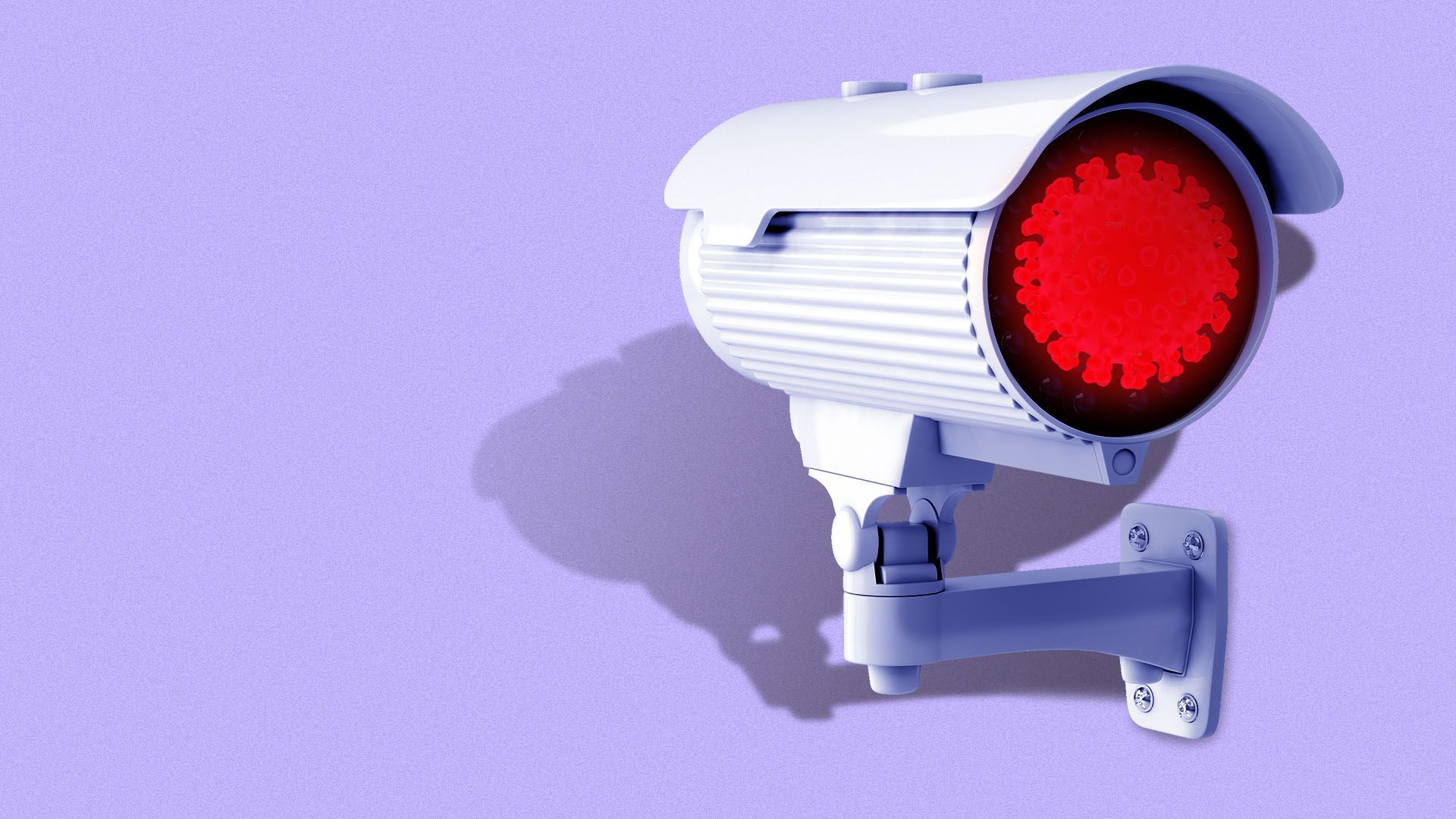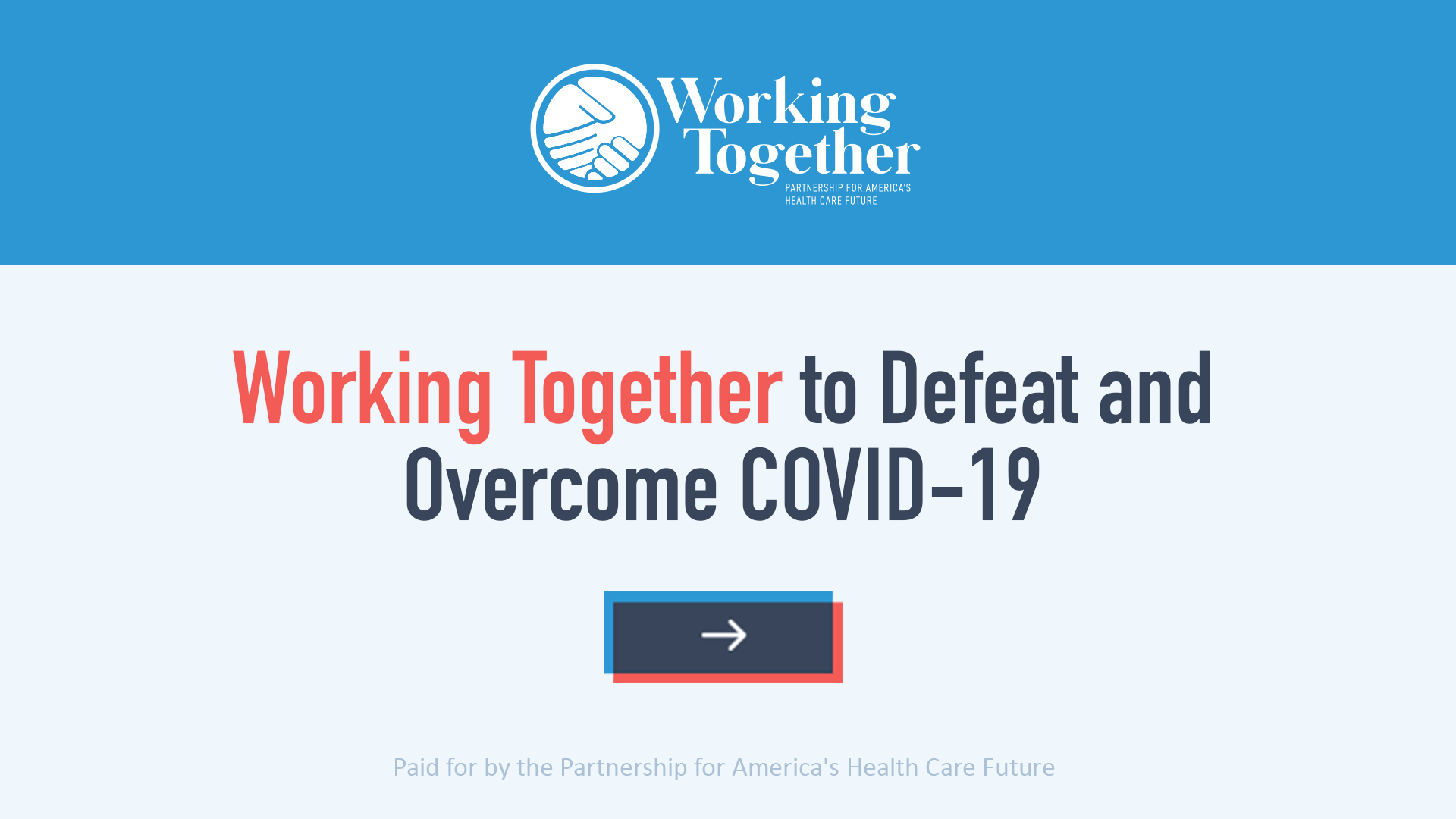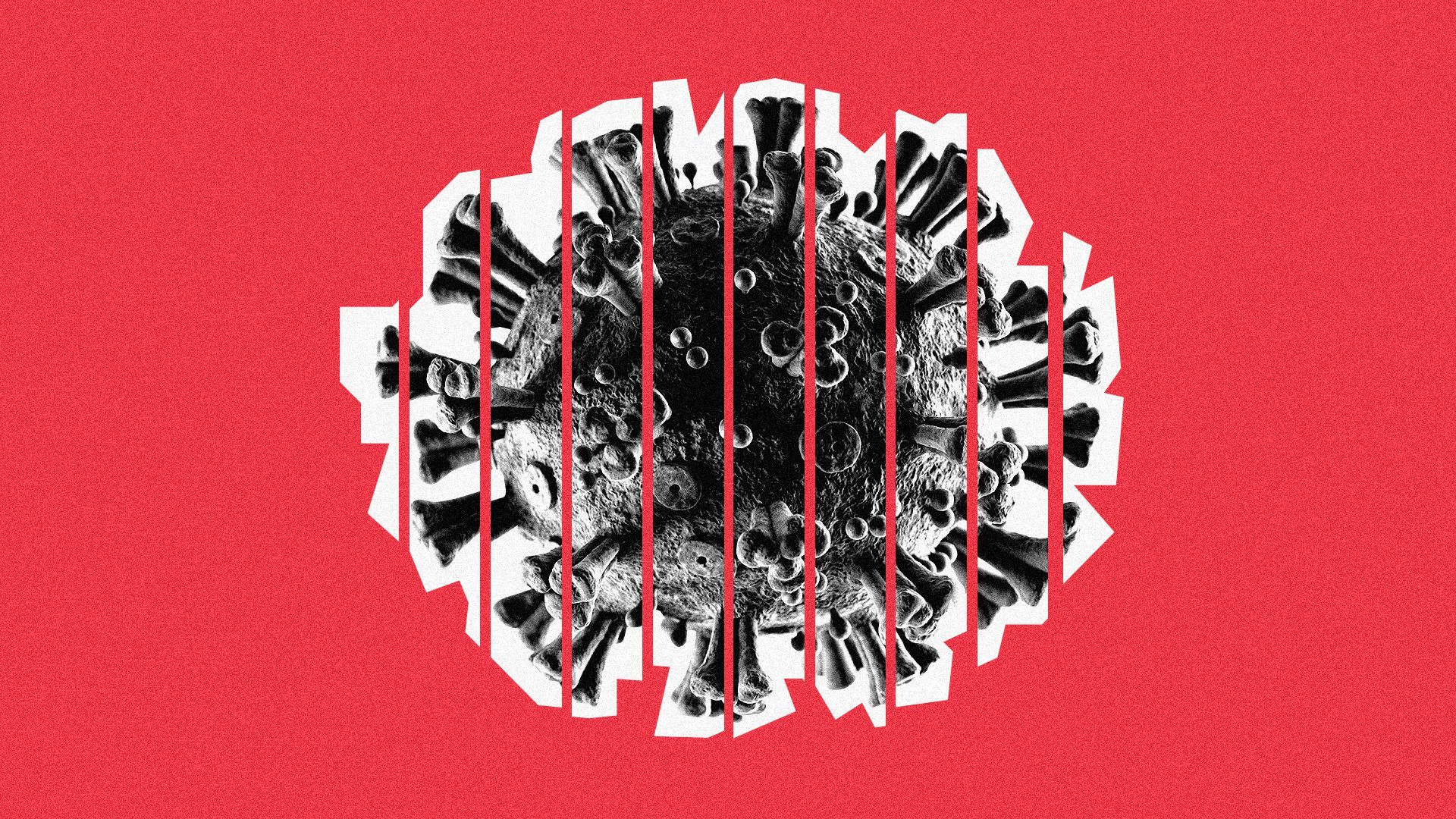| | | | | | | Presented By Partnership for America's Health Care Future | | | | Vitals | | By Caitlin Owens ·Jan 14, 2021 | | Good morning. - I'll be debuting Axios' Audience Bill of Rights & Manifesto alongside other Axios reporters today at our inaugural Town Hall event, Axios' War for Truth. RSVP here.
Today's word count is 1,212, or a 5-minute read. | | | | | | 1 big thing: Tuning out the virus at the peak of its destruction |  Data: The COVID Tracking Project, state health departments; Map: Andrew Witherspoon/Axios The U.S. is now averaging nearly 250,000 new coronavirus cases per day — a crisis of staggering proportions, even though many Americans have tuned it out, Axios' Sam Baker and Andrew Witherspoon report. The big picture: It's not even sufficient to say the pandemic is "still going on." The pandemic is raging. Its deadliest and most dangerous days are happening right now. And it keeps getting worse. Everywhere you look, day-to-day vigilance is fading. - You see it up close, as social distancing falls by the wayside, masks dangle on people's chins, and friends and family let their guard down to socialize indoors.
- Americans are traveling, restaurants are at max capacity, some sports teams have fans in the stands, and some colleges are bringing students back to campus. People were ignoring news coverage of the virus even before new crises pushed it off the front page.
But as Americans are taking the virus less seriously, it is becoming more serious. - The U.S. averaged 244,519 new cases per day over the past week, a 13% jump from the week before.
- Hospital capacity is dangerously strained in several parts of the country. Coronavirus patients now occupy 40% of all the hospital beds in Arizona, 33% in California and Nevada, and 26% of all the beds in Georgia and Texas.
- December was the deadliest month of the entire pandemic, and January is on track to beat it. The virus has already killed roughly 35,000 Americans just in the first 13 days of this month.
What's next: This will keep getting worse before it gets better. - Each of the 244,519 people infected every day can each go on to infect several more.
- And it will be months, at least, before most Americans can protect themselves with a vaccine.
|     | | | | | | 2. Hospitals remain in crisis mode |  Hospitals around the country remain filled beyond capacity, threatening the quality of care provided both to coronavirus patients and people suffering other medical emergencies. - Arizona, Georgia, Texas, Delaware, South Carolina and Virginia are currently experiencing record hospitalizations.
Why it matters: We're beginning to see more than 4,000 coronavirus deaths a day, and heart attacks and car accidents are still happening, whether or not the local hospital has any room left. - Some patients' conditions will likely worsen without timely medical care.
Zoom in: Officials in Los Angeles County, where beds have been set up in hallways and patients wait hours in ambulances to be admitted to the emergency room, per the L.A. Times , said yesterday that hospitals likely haven't seen the effects of the end of the holiday season. - Hospitals in Southern Nevada are filling up, the Las Vegas Review-Journal reports, with one Las Vegas hospital issuing a disaster declaration recently — which is a "very fancy way of saying rationing care," said Joe Corcoran, chief medical officer overseeing HCA Healthcare hospitals in Nevada and California.
The bottom line: Vaccines may be the dominant story in the news right now, but the situation on the ground is still dire. |     | | | | | | 3. Why COVID demands genetic surveillance |  | | | Illustration: Sarah Grillo/Axios | | | | A seemingly more transmissible coronavirus variant is threatening the world — and exposing the U.S.' lackluster genetic surveillance, Axios' Bryan Walsh reports. Why it matters: A beefed-up program to sequence the genomes of infectious disease pathogens infections could help the U.S. identify dangerous new coronavirus variants — and get the jump on pathogens that could ignite the pandemics of the future. Driving the news: New variants of SARS-CoV-2 are being identified by scientists around the world, Axios' Marisa Fernandez reports. Yes, but: Genetic surveillance of coronavirus variants in the U.S. lags well behind dozens of other countries, which means we lack a clear picture of exactly how the novel coronavirus currently infecting more than 200,000 people a day is mutating here. - To identify whether coronavirus variants are emerging in the U.S., scientists need to genetically sequence infections.
- But according to the nonprofit GISAID initiative, the U.S. has only sequenced a little more than 60,000 cases since the start of the pandemic, or roughly 0.3% of all cases.
Be smart: The bottleneck here isn't scientific. Genetic sequencing has gotten faster and cheaper, and every state in the U.S. has the technical capacity to decode viral genomes. - Rather, the U.S. lacks the kind of unified, national genetic surveillance program adopted by the U.K.
- While the CDC in May brought together dozens of labs in an effort to accelerate sequencing, a report by the National Academies of Science, Engineering and Medicine in July concluded current efforts are "typically passive, reactive, uncoordinated, and underfunded."
Go deeper. |     | | | | | | A message from Partnership for America's Health Care Future | | Working together to defeat and overcome COVID-19 | | |  | | | | America's health care leaders are working together to help defeat and overcome COVID-19 by expanding access to coverage and care, improving quality of care, strengthening the coverage millions rely on, protecting America's most vulnerable and preserving patient control. | | | | | | 4. Drug companies keep raising prices | | More than 100 pharmaceutical companies raised prices on over 600 drugs at the beginning of the new year, according to a new report from the advocacy group Patients for Affordable Drugs. The big picture: Millions of people have lost their health insurance because of the pandemic, and uninsured patients must often pay the full sticker price for prescription drugs, Axios' Marisa Fernandez writes. By the numbers: 95% of price hikes were on brand-name drugs. The median increase was about 5%, and almost all of them were greater than inflation. - Pfizer raised prices on 93 products, more than any other company.
- AbbVie hiked the price of Humira — which raked in $21 billion in sales in 2019 — by 7.4%.
- Eliquis and Revlimid had increases of 6% and 4.5%, respectively.
The other side: As drugmakers are always quick to note, list prices don't tell the full story. Patients with insurance don't pay those prices, and may not see any increase in their costs even when list prices go up. - But price increases do affect the uninsured and people with high deductibles.
Go deeper: The coronavirus pandemic hasn't stopped drug price increases |     | | | | | | 5. Delays overshadow J&J vaccine's potential | | Participants who received Johnson & Johnson's one-shot vaccine in an early study developed immunity to the coronavirus for at least 71 days, but the company's production lag could mean a rollout of fewer-than-promised doses, the New York Times reported Wednesday. Why it matters: If approved, J&J's vaccine would be the first available to protect from COVID with a single dose, streamlining vaccine administration and distribution, Axios' Shawna Chen writes. The big picture: The U.S. government signed a $1 billion contract with J&J last August. The drug company promised that 12 million doses of its vaccine would be ready for deployment by the end of this February and a total of 100 million doses by the end of June. - J&J has fallen behind schedule by as much as two months and likely won't catch up until the end of April, the Times reports.
- This could lead to a shortage in doses once spring comes around; the federal government has only secured enough to vaccinate 200 million of the roughly 260 million eligible adults in the first half of 2021.
The good news: J&J's vaccine doesn't require freezing like Moderna and Pfizer-BioNTech's shots, per Bloomberg, and can be stored at refrigerator temperatures for three months. What to watch: Results from a late-stage trial of 45,000 volunteers will offer more data in the coming weeks, but the company anticipates a high efficacy rate at or above 70%, chief scientific officer Paul Stoffels told Bloomberg. |     | | | | | | 6. Catch up quick |  | | | Illustration: Aïda Amer/Axios | | | | Coronavirus deaths have risen by 10% or more since last week in 25 states, and yesterday was the third time national deaths rose above 4,000, per the Covid Tracking Project. Thanks largely to social distancing and mask-wearing — as well as higher uptake of the flu vaccine — influenza deaths this season are almost nonexistent, Bryan reports. Some of the most prominent sources of coronavirus misinformation were part of the mob that stormed the Capitol last week, NYT reports. Some states are pushing for students and teachers to return to classrooms as teachers gain access to the coronavirus vaccine, AP reports. Dollar General is offering to pay its workers to get a coronavirus vaccine, becoming one of the first large U.S. employers to incentivize employees to be vaccinated, WSJ reports. |     | | | | | | A message from Partnership for America's Health Care Future | | Working together to defeat and overcome COVID-19 | | |  | | | | From developing innovative tests, treatments and vaccines to waiving the costs of COVID-19 testing and treatment, America's health care leaders are working together to help American patients get healthy and stay healthy so we can all overcome the COVID-19 pandemic. | | | | | | Axios thanks our partners for supporting our newsletters.
Sponsorship has no influence on editorial content. Axios, 3100 Clarendon Blvd, Suite 1300, Arlington VA 22201 | | | You received this email because you signed up for newsletters from Axios.
Change your preferences or unsubscribe here. | | | Was this email forwarded to you?
Sign up now to get Axios in your inbox. | | | | Follow Axios on social media:    | | | | | |








No comments:
Post a Comment